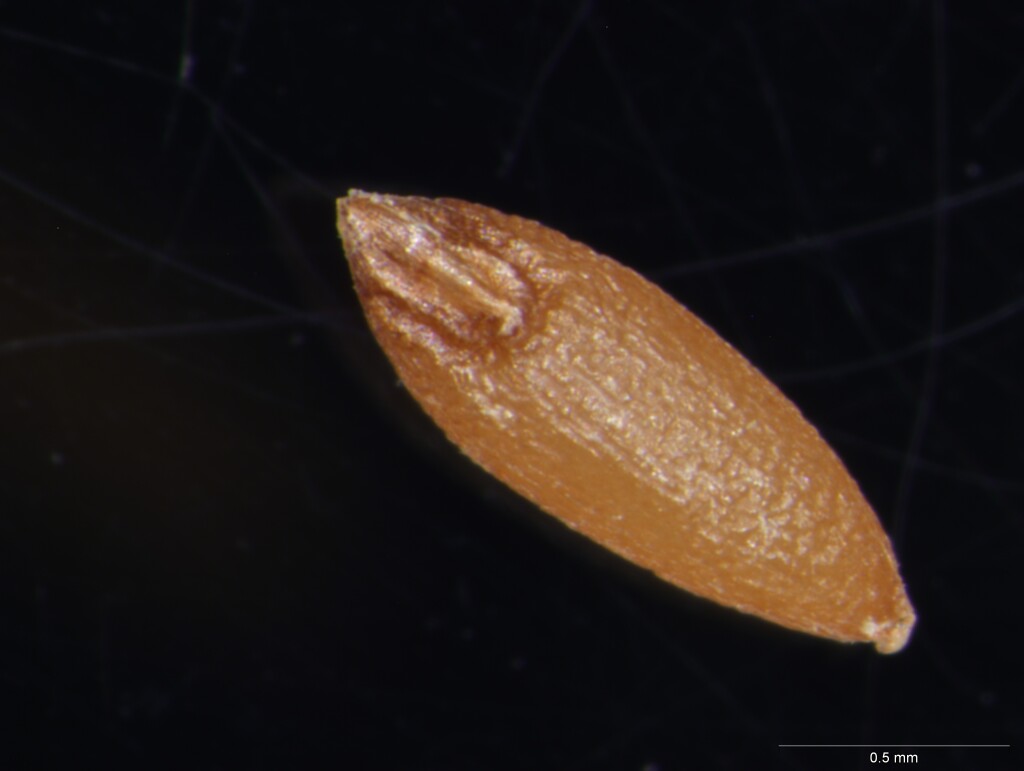Deyeuxia affinis
M.GrayNarrowly tufted or shortly rhizomatous perennial, culms erect, to 20(–30) cm high. Leaf-blades stiff, folded, or the margins inrolled, smooth and glabrous on the outer (lower) surface, minutely scabrous on the margins and upper surface, to 6 cm long and c. 1 mm wide, apex often slightly thickened and bluntish; ligules truncate, minutely ciliate at apex, 1–3 mm long. Inflorescence a narrow contracted panicle 2–5 cm long. Spikelets 2.8–3.5 mm long, usually purplish at least when young; glumes narrowly acute, sometimes shortly mucronate, subequal or the upper slightly longer, scabrous along the keel in the upper part, upper margins silvery-hyaline; lemma acute, slightly shorter than the spikelet, indistinctly 5-nerved, smooth or minutely scabrous along the nerves toward the apex, not or barely hardened at maturity, awned from just below the apex; awn straight, 0.8–2 mm long, exceeding lemma by up to 1 mm; callus hairs dense, about two-thirds as long as lemma; rachilla bristle 0.5–1 mm long, plumose, with hairs nearly reaching the apex of the lemma. Flowers Jan.–Feb.
HNF, VAlp. Also NSW (Kosciusko area). Rare in Victoria and apparently confined to gravelly seepage areas near Sphagnum mossbeds in the vicinity of Mt Cope on the Bogong High Plains.
Walsh, N.G. (1994). Poaceae. In: Walsh, N.G.; Entwisle, T.J., Flora of Victoria Vol. 2, Ferns and Allied Plants, Conifers and Monocotyledons, pp. 356–627. Inkata Press, Melbourne.
 Spinning
Spinning

